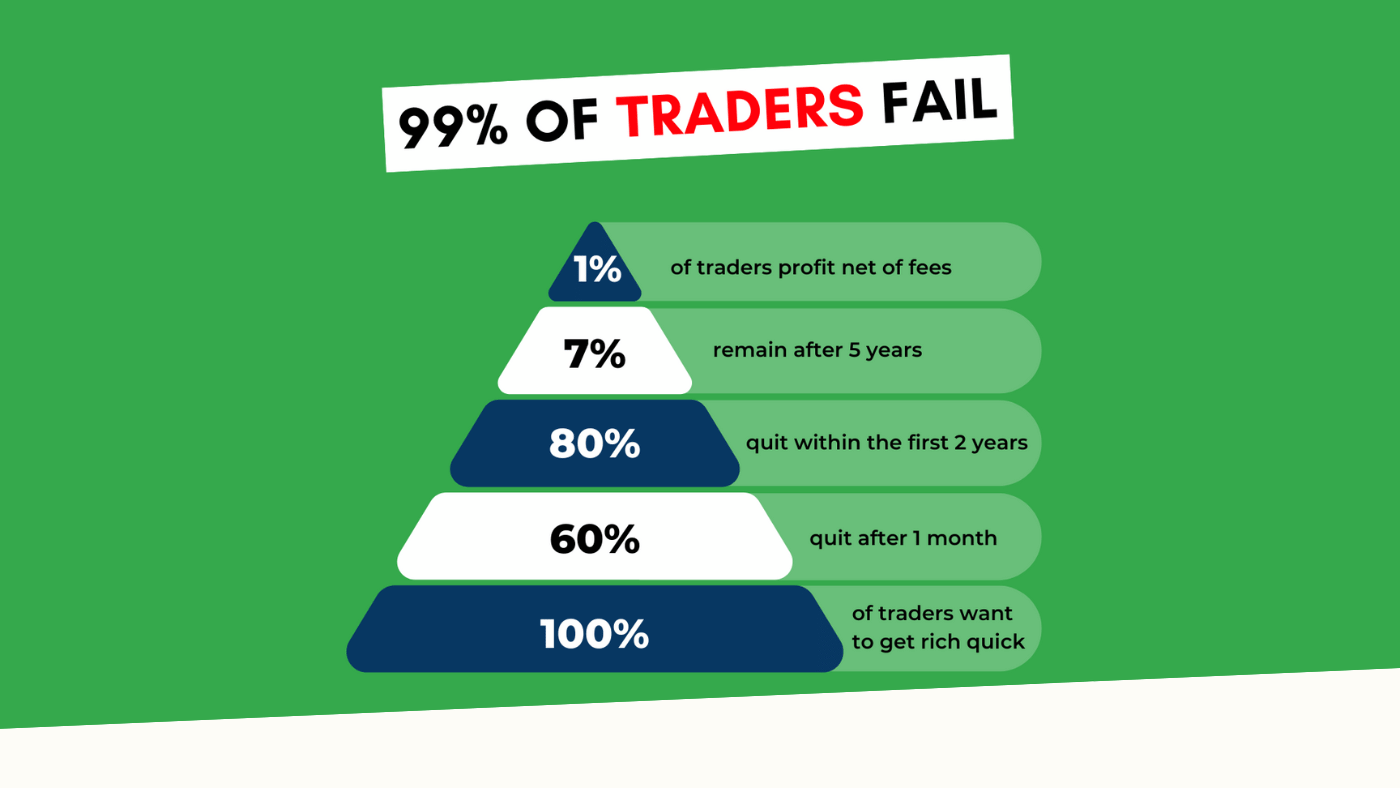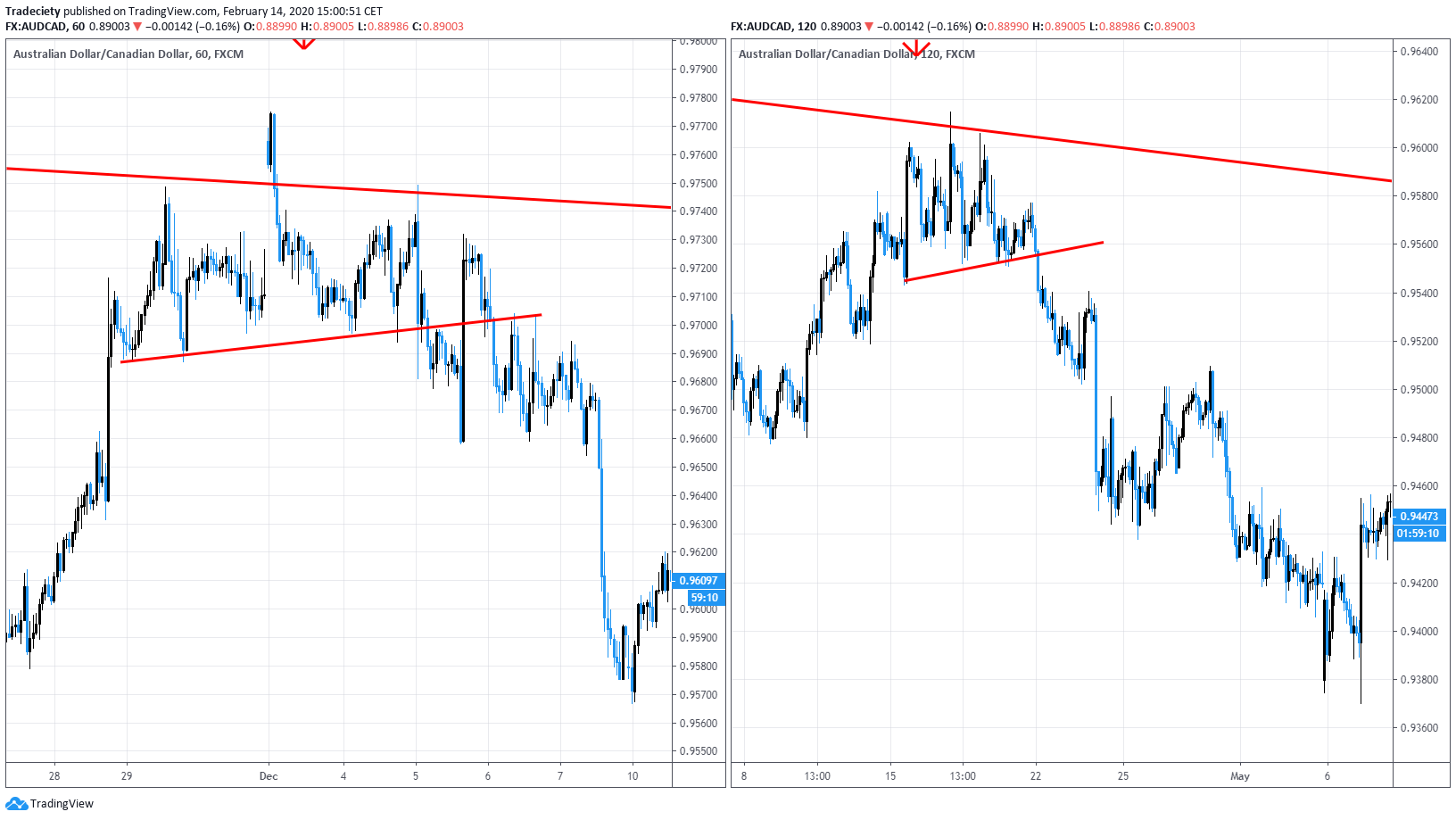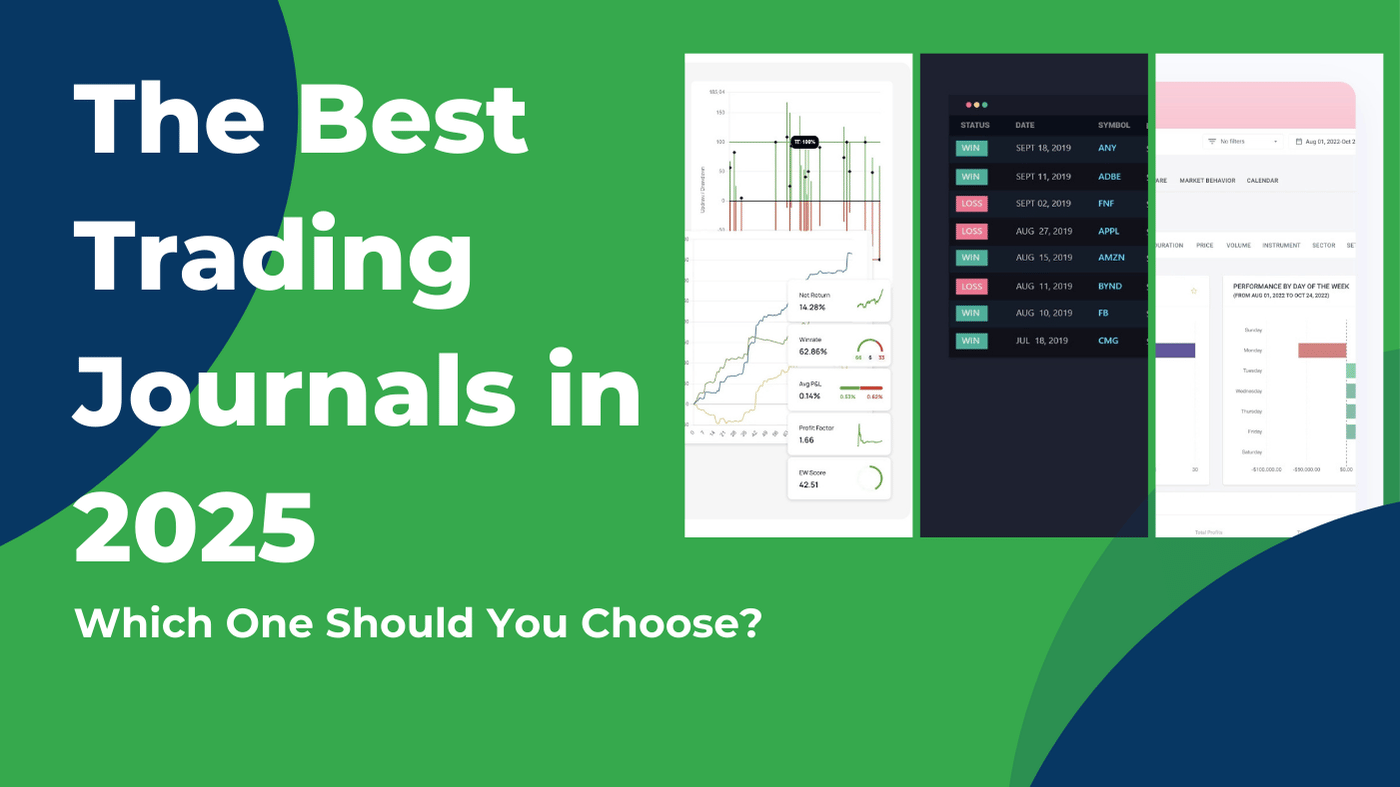3 min read
Scientist Discovered Why Most Traders Lose Money – 24 Surprising Statistics
“95% of all traders fail” is the most commonly used trading related statistic around the internet. But no research paper exists that proves this...
Position sizing is a critical aspect of trading that determines how much capital to allocate to a given trade. Whether you are trading stocks, forex, or cryptocurrencies, the size of each trade dictates how much profit you can make and, more importantly, how much of your capital is at risk. Position sizing is therefore not just about profit—it’s about the preservation of capital, ensuring that a single loss doesn’t derail your entire portfolio.
The Role of Position Sizing in Trading Success
Successful traders often emphasize consistent profits over time rather than short-lived, oversized wins. Proper position sizing is central to this stability. By determining how much to risk on each trade, traders can limit drawdowns and withstand inevitable losing streaks. Conversely, poor position sizing is one of the most common reasons why traders fail, as it leads to significant losses that are hard to recover from.
2.1. Key Terms to Know
Before diving into position sizing techniques, it’s essential to understand a few key terms:
Risk per Trade: The amount of money you’re willing to lose on a single trade.
Account Balance: The total funds available in your trading account.
Risk/Reward Ratio: The ratio between potential risk and reward, helping evaluate if a trade is worth taking.
Leverage: Borrowing additional capital to increase trade size, amplifying both gains and losses.
Margin: The amount of your own money required to open a leveraged position.
These concepts form the backbone of effective position sizing.
2.2. How Position Sizing Affects Trading Outcomes
Position sizing dramatically impacts trading outcomes. If your position size is too large, a small adverse market movement can result in a significant loss, potentially blowing up your account. On the other hand, if the position size is too small, you might not capitalize enough on winning trades to cover your losses. Volatility also plays a significant role, as highly volatile assets demand a smaller position size to maintain the same risk level compared to less volatile ones.
2.3. The Psychological Impact of Position Size
The connection between position size and trading psychology cannot be overstated. When traders take on a large position relative to their account, the potential for loss increases, which adds significant mental pressure. This heightened pressure can often lead to impulsive decisions, such as prematurely closing a trade or moving a stop loss. The fear of losing a large sum can cause traders to second-guess their strategies, leading to mistakes that they might not make under lower-risk circumstances.
2.4 Depletion of Mental Capital
Another critical psychological consequence of improper position sizing is the depletion of mental capital. Large losses do not just diminish your trading account; they also erode your confidence and decision-making abilities. The emotional toll of significant losses often leads to hesitation, revenge trading, or abandoning well-thought-out trading plans. Mental capital is as valuable as financial capital—traders need a resilient mindset to stay focused and objective. Therefore, keeping position sizes manageable is key to maintaining mental clarity and avoiding a spiral of poor decisions driven by stress and desperation.
3.1. The Fixed Dollar Method
The Fixed Dollar Method involves risking a fixed amount of money per trade, regardless of your account size. For instance, if you decide to risk $50 on every trade, you maintain consistency in your exposure. This method is simple and suitable for small accounts. However, as your account grows, the risk-to-reward ratio might become imbalanced, making it less effective for larger portfolios if traders do not adjust their risk per trade.
The table below shows that when your trading account grows and you do not change the capital at risk, the %-risk per trade will decrease over time - overvaluing trades with a small account and under-valuing trades with a larger account.
| Account size growing | Capital at risk | %-risk |
| 1000 USD | 50 USD | 5% |
| 1500 USD | 50 USD | 3.3% |
| 2000 USD | 50 USD | 2.5% |
| 2500 USD | 50 USD | 2% |
| 3000 USD | 50 USD | 1.6% |
| 3500 USD | 50 USD | 1.4% |
3.2. The Percent Risk Method
The Percent Risk Method is one of the most popular approaches. Here, you risk a fixed percentage of your account balance on each trade—often between 1-2%. For example, if your account balance is $10,000 and you risk 2%, you would risk $200 per trade. This method helps ensure that your risk scales proportionately with your account, safeguarding your capital against large losses while allowing for growth as your account grows.
| Account size | %-risk | Capital at risk |
| 1000 USD | 1% | 10 USD |
| 1000 USD | 2% | 20 USD |
| 1000 USD | 5% | 50 USD |
| 5000 USD | 0.5% | 25 USD |
| 5000 USD | 1% | 50 USD |
| 5000 USD | 3% | 150 USD |
3.3. The Volatility-Based Position Sizing Approach
Volatility-based sizing uses market volatility to determine the appropriate position size. One common indicator used is the Average True Range (ATR), which measures market volatility over a specific period. If the ATR indicates high volatility, you will take a smaller position to account for larger potential price swings. This dynamic approach helps to align your risk with current market conditions, adapting to the market’s behavior.

4.1. Defining Risk Tolerance as a Trader
Understanding your risk tolerance is fundamental to deciding on the size of your trades. Risk tolerance varies from person to person, depending on factors like financial goals, experience, and even psychological comfort with losses. It’s important to be honest with yourself about how much risk you can handle, as this helps prevent emotional decisions when trades don’t go your way.
4.2. Setting Stop Loss Levels and Adjusting Position Size Accordingly
Stop loss levels help limit losses by automatically closing a position when it moves against you. When setting a stop loss, you should also adjust your position size accordingly—ensuring that, if the stop is hit, you lose no more than your pre-defined risk per trade. Tight stop losses require smaller position sizes to avoid getting stopped out too often.
5.1. Day Trading and Scalping
For day trading and scalping, position sizes tend to be smaller with very tight stop losses. Given the high frequency of trades and shorter holding periods, risk per trade is kept minimal. Fast decision-making is key, and small position sizes help control potential losses amid rapid market movements.
5.2. Swing Trading
Swing trading involves holding positions for several days to weeks. With a focus on larger price movements, swing traders often opt for slightly larger positions compared to day traders but adjust these sizes depending on volatility and chart patterns.
5.3. Long-Term Investing
In long-term investing, position sizes should be determined with diversification in mind. Since positions are held for extended periods, traders must avoid overexposure to any single asset. Position sizes tend to be larger, but across a diversified portfolio, risk is spread to minimize the impact of a downturn in one area.
Position size calculators are available online to help traders quickly determine how much capital to allocate to a given trade based on risk percentage, stop loss, and account balance. These calculators can save time and help avoid costly errors, though it’s wise to understand the calculations manually as well.
Forex position size calculator
7.1. Dealing with the Fear of Loss
Fear of loss can lead traders to reduce position sizes unnecessarily or close trades prematurely. To combat this, it's crucial to adhere to a well-formulated plan that aligns with your risk tolerance. Confidence in your position sizing strategy helps mitigate fear.
7.2. Overconfidence and Position Sizing Errors
Overconfidence often leads to excessive position sizes, which can result in substantial drawdowns during inevitable losses. Staying disciplined and sticking to your predetermined risk limits is key to avoiding such errors.
8.1. Ignoring Volatility
Ignoring volatility can lead to severe losses. Using tools like ATR can provide insights into how volatile a security is, guiding appropriate position sizes that manage risk in turbulent markets.
8.2. Emotional Decisions and Lack of Planning
Many traders make the mistake of letting emotions dictate their position sizes. Revenge trading, where traders increase position sizes to recoup losses, often results in even greater losses. Maintaining a trading journal can help you stay accountable to your plan.
Assess Risk Tolerance: Understand your comfort with losses.
Define Trading Capital: Determine the amount available for trading.
Set Risk Parameters: Choose a percentage of your account to risk per trade.
Calculate Position Size: Use risk parameters and stop losses to calculate appropriate trade sizes.
As your experience and account grow, your position sizing plan should evolve. Higher account balances allow for more diversification, while market conditions may necessitate adjusting risk levels.
Effective position sizing is essential for preserving capital and ensuring long-term trading success. From understanding different methods to dealing with psychological challenges, disciplined application is key to success.
Incorporate a clear position sizing strategy into your trading plan today. Utilize available tools and remain disciplined to achieve consistent, sustainable results. Remember, managing risk is the cornerstone of becoming a successful trader.
What Is the Best Position Sizing Method for Beginners?
For beginners, the Percent Risk Method is typically the best choice. By risking a fixed percentage of their account on each trade—usually 1-2%—new traders can protect their capital while learning. This approach keeps losses manageable and ensures that a string of losing trades doesn't deplete the account significantly. It’s a simple, scalable method that helps beginners learn discipline without excessive risk exposure.
Is Position Sizing the Same as Risk Management?
While related, position sizing is about determining how much to trade, while risk management is the broader practice of mitigating overall trading risk.
Can I Use Leverage to Adjust My Position Size?
Leverage can be used, but it’s risky. It’s important to carefully consider how leverage amplifies both potential profits and losses, and only apply it within your risk limits.

3 min read
“95% of all traders fail” is the most commonly used trading related statistic around the internet. But no research paper exists that proves this...

3 min read
Trendlines can be great trading tools if used correctly and in this post, I am going to share three powerful trendline strategies with you.

3 min read
Choosing the right trading journal is essential for traders wanting to analyze performance, refine strategies, and improve consistency. In this...
.png)